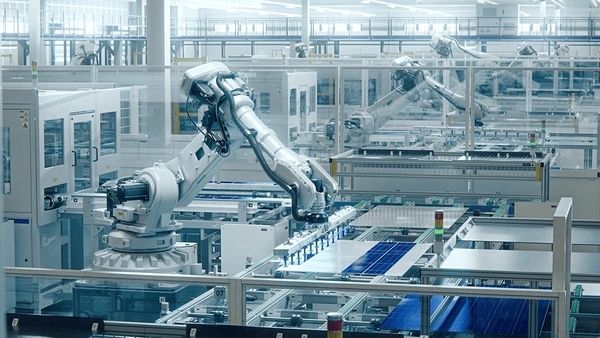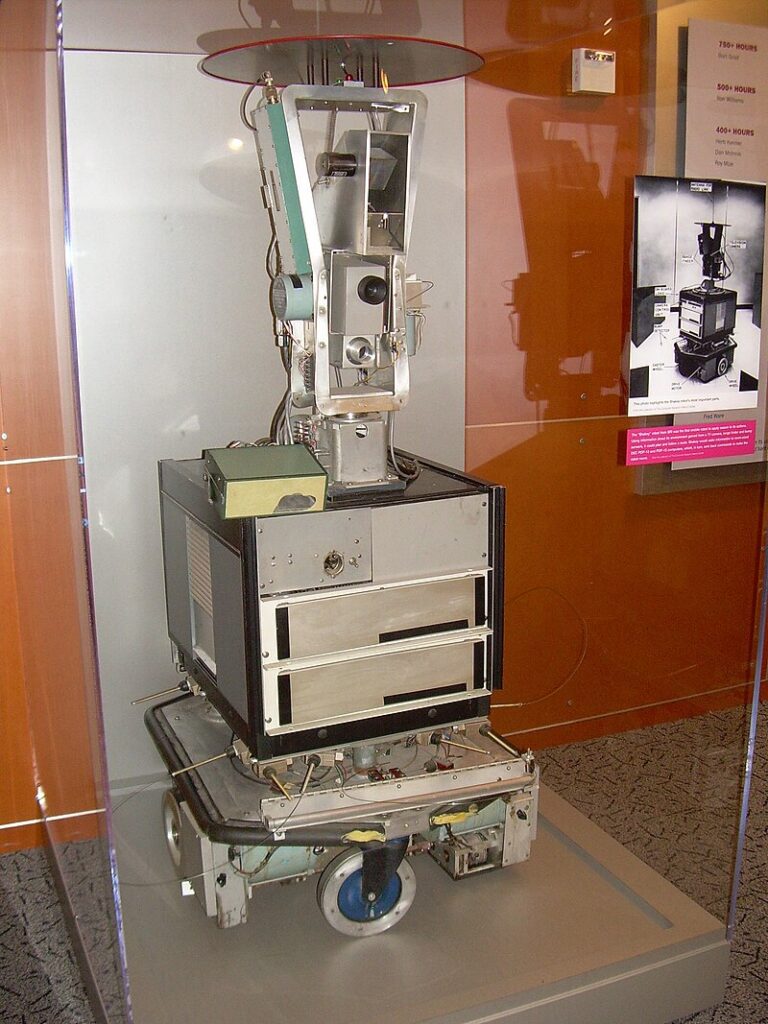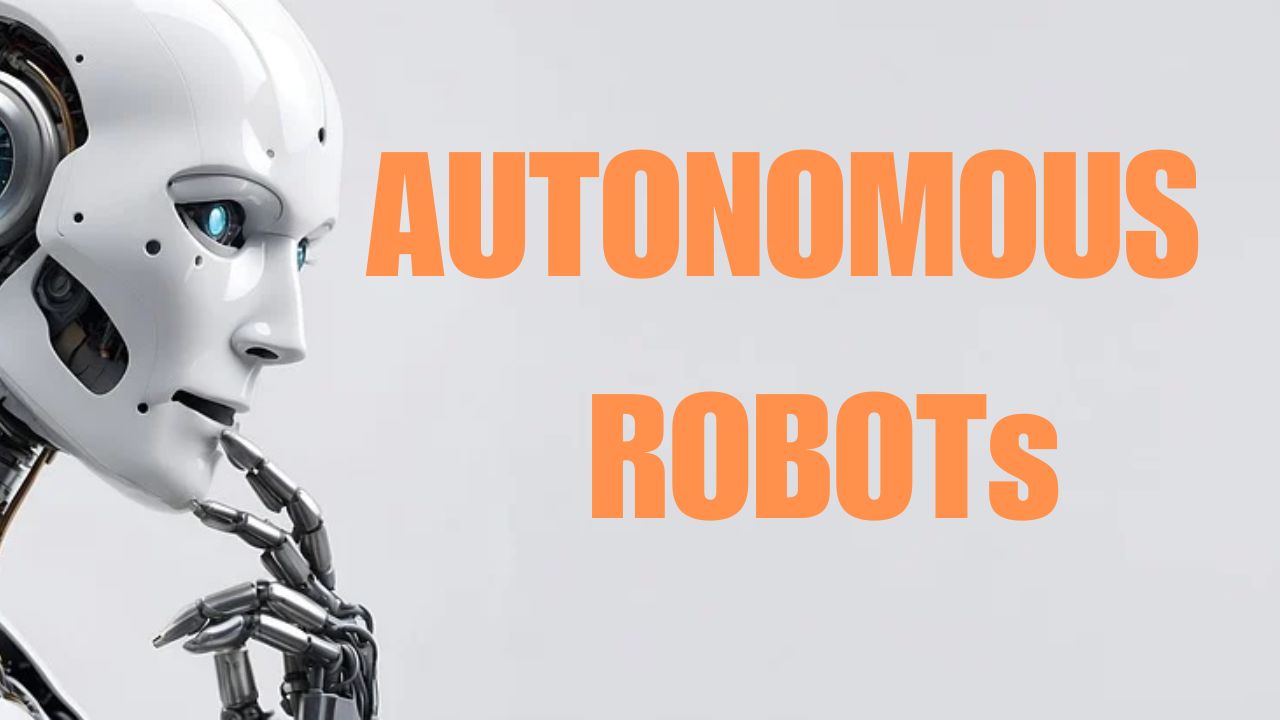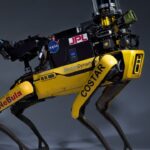Table of Contents
ToggleIntroduction
Autonomous robots have become increasingly prevalent in various industries, revolutionizing the way in which tasks are performed. In this article, we will delve deeper into the concept of “What are the uses of autonomous robots,” exploring their applications, advantages, and disadvantages, the first autonomous robot, notable examples, and delving into the world of robotics. So let’s get started without further ado .

What is an autonomous robot
Autonomous robots are machines that can operate independently and carry out tasks without human intervention means there is no need to handle it. “What are the uses of autonomous robots” is a question answered by these robots, utilizing artificial intelligence (AI) and advanced sensors to perceive their environment, navigate through it, and execute designated functions. Equipped with decision-making capabilities or abilities, they can adapt to changing circumstances and make decisions in real-time. Is it not surprising ! obviously it is surprising.
What Are The Uses Of Autonomous Robots
The applications or uses of autonomous robots span a wide range of industries, such as business, education and medical field. One of the most prominent sectors is manufacturing, where “What are the uses of autonomous robots” is exemplified by these robots streamlining production lines and enhancing efficiency. They can handle complex tasks such as assembling products, monitoring quality control, and even carrying out maintenance operations in hazardous environments.
Autonomous robots are also utilized in the field of healthcare. They can assist in delicate surgeries, providing unparalleled precision and reducing the risk of human error , it is the most crucial aspect of autonomous robot. Additionally, these robots can aid in patient care, carrying out tasks like medication delivery, patient monitoring, and physical assistance.
Moreover, the logistics industry has greatly benefited from the implementation of autonomous robots. These robots can efficiently handle inventory management, package sorting, and even last-mile deliveries and so on. By automating these processes, businesses can reduce costs, improve productivity, and enhance overall customer satisfaction and more.
Advantages and Disadvantages
Autonomous robots offer numerous advantages. Firstly, they are capable of operating in environments that may be dangerous or inaccessible to humans, mitigating risks and increasing safety levels. Additionally, “What are the uses of autonomous robots” includes their ability to work tirelessly, reducing the need for breaks and improving productivity.
Moreover, autonomous robots can execute tasks with precision, minimizing errors and enhancing overall efficiency. They can also adapt to dynamic situations and make decisions in real-time, which is particularly valuable in industries where rapid response is crucial. There is also a Advantage of autonomous robot that is using virtual assistant.
However, there are also potential disadvantages to using autonomous robots. One major concern is the potential for job displacement. As these robots become more advanced, there is a risk of reduced employment opportunities for humans in certain sectors. Additionally, the initial investment required to implement autonomous robots can be substantial, posing a barrier to adoption for some businesses.
First autonomous robot

The first autonomous robot is widely regarded as the Shakey robot, developed by researchers at Stanford Research Institute in the late 1960s and early 1970s. Shakey was a mobile robot capable of perceiving its environment, planning its actions, and executing tasks such as carrying objects and navigating through rooms by humans. It laid the foundation for future advancements in the field of autonomous robotics. It was great inovetion of humans.
Examples of an autonomous robots
One notable example of “What are the uses of autonomous robots” is the Roomba, a popular robotic vacuum cleaner. Equipped with sensors, it can map out a room, detect obstacles, and autonomously clean the floor. The Roomba uses AI algorithms to navigate efficiently and return to its charging dock when the battery is low.
There are more examples of autonomous robots such as :
- Tesla Autopilot
- Boston Dynamics’ Spot
- Softbank’s Pepper
- NASA’s Mars Rovers (e.g., Curiosity)
- Agrobot for Agriculture
- Surgical Robots like Da Vinci
Who created the autonomous robot
Autonomous robots have been developed by numerous researchers and engineers throughout history. “What are the uses of autonomous robots” is a culmination of collaborative efforts from scientists, engineers, and innovators around the whole world. Individual contributions have included advancements in AI, sensor technology, and robotic systems, enabling the creation of increasingly sophisticated autonomous robots. So, it is of their hard works.
Father of robot
The term “robot” was coined by Czech writer Karel Čapek in his play “R.U.R” (Rossum’s Universal Robots) in 1920. However, it was Isaac Asimov who popularized the concept of robots in his science fiction stories and is often referred to as the “father of robotics.” Asimov’s work explored the relationship between robots and humans, delving into ethical and moral implications. His afford was memorable.
Full form of ‘robot’
The term “robot” does not have a specific full form. It originated from the Czech word “robota” which means forced labor or servitude. Initially, it referred to fictional humanoid machines (general), but the concept has since evolved to encompass a wide range of automated machines.
Are autonomous robots AI
Autonomous robots utilize AI technologies to perceive and understand their environment, make decisions, and carry out tasks. However, it is essential to note that not all robots are autonomous, and not all AI-based systems are considered robots. While autonomous robots incorporate AI, there are various types of robots, and AI can be utilized in a range of applications beyond robotics. So , it is not good to say that all autonomous robots are AI.
Autonomous vs Controlled robots
Autonomous robots have the ability to operate independently and make decisions based on their perception of the environment. On the other hand, controlled robots rely on continuous human interaction and guidance to perform tasks. Controlled robots require human input and lack the ability to adapt to changing circumstances without human intervention. That is why we mostly prefer autonomous robots.
What is level 1-5 Autonomous Driving
- Level 1: Driver Assistance 👉 The driver has full control, but there are some automated features like adaptive cruise control or lane-keeping assistance.
- Level 2: Partial Automation 👉 The vehicle can control both steering and acceleration/deceleration simultaneously, but the driver must remain engaged and monitor the environments.
- Level 3: Conditional Automation 👉 The vehicle can manage most driving tasks under certain conditions, allowing the driver to engage in other activities if they want but must be prepared to take over when necessary.
- Level 4: High Automation 👉 The vehicle can perform all driving tasks under specific conditions and can operate without human intervention or interaction in predefined areas or situations.
- Level 5: Full Automation 👉 The vehicle is fully autonomous and can perform all driving tasks under any conditions, without the need for human intervention. It is very helpful for drivers who want to do some another activity during driving. It is possible only due to autonomous driving.
SUMMARY
“What are the uses of autonomous robots” has emerged as an integral question in various industries, offering benefits such as increased productivity, improved safety, and enhanced efficiency. As technology continues to advance, the applications of autonomous robots are poised to expand, revolutionizing the way we work, live, and interact with technology. Now a days we are much dependent on autonomous robots because it is time sever , cost sever , effort sever and more. That is why it is used in several sectors.
FAQs
1. What are the uses of autonomous robots?
Autonomous robots find applications across various industries. They streamline manufacturing, assist in surgeries, and optimize agriculture tasks and so on. In logistics, they manage inventory and aid in deliveries. Drones with autonomy contribute to surveillance and data collection.
These robots also play a vital role in exploration, handling tasks too hazardous for humans or us. Overall, their versatility enhances productivity and tackles complex challenges in diverse fields or areas.
2. What was the first autonomous robot?
The first autonomous robot was “Shakey”. It was developed in the late 1960s at Stanford Research Institute. It could move around, perceive its surroundings, and plan its actions, marking a significant milestone in robotics field.
3. What is an autonomous device?
An autonomous device is may any machine or gadget capable of operating independently to humans or without constant human input. These devices often rely on sensors, algorithms, and artificial intelligence to make decisions and execute tasks very efficiently.
4. What is autonomous in engineering?
In engineering, autonomy refers to the ability of a system or machine to perform tasks without continuous human intervention or interaction. It involves designing systems that can operate, adapt, and make decisions independently to any other external resources like humans.
5. What are the sensors in autonomous robots?
Autonomous robots use various sensors, including cameras, lidar, radar, and ultrasonic sensors. These devices enable the robot to perceive its surroundings, avoid obstacles, and make informed decisions based on the gathered information. Sensors are crucial for any autonomous robots they paly role of EYES for robots.
You Can Read Also This Articles 👇👇👇
The main objective of industrial robots
What are The uses of autonomous robots
What is the work of virtual assistant
What Are Two Successful Application Of AI In Business
Future of AI In Education System
How does AI help in healthcare
How to use machine learning in healthcare
How are autonomous vehicles testbed
How can Artificial intelligence be used in the world of education

I am an Engineer and Passionate Blogger, who loves to share Deep, purified and Latest Information about IT (Information Technology) sector. Read More….





Leave a Reply